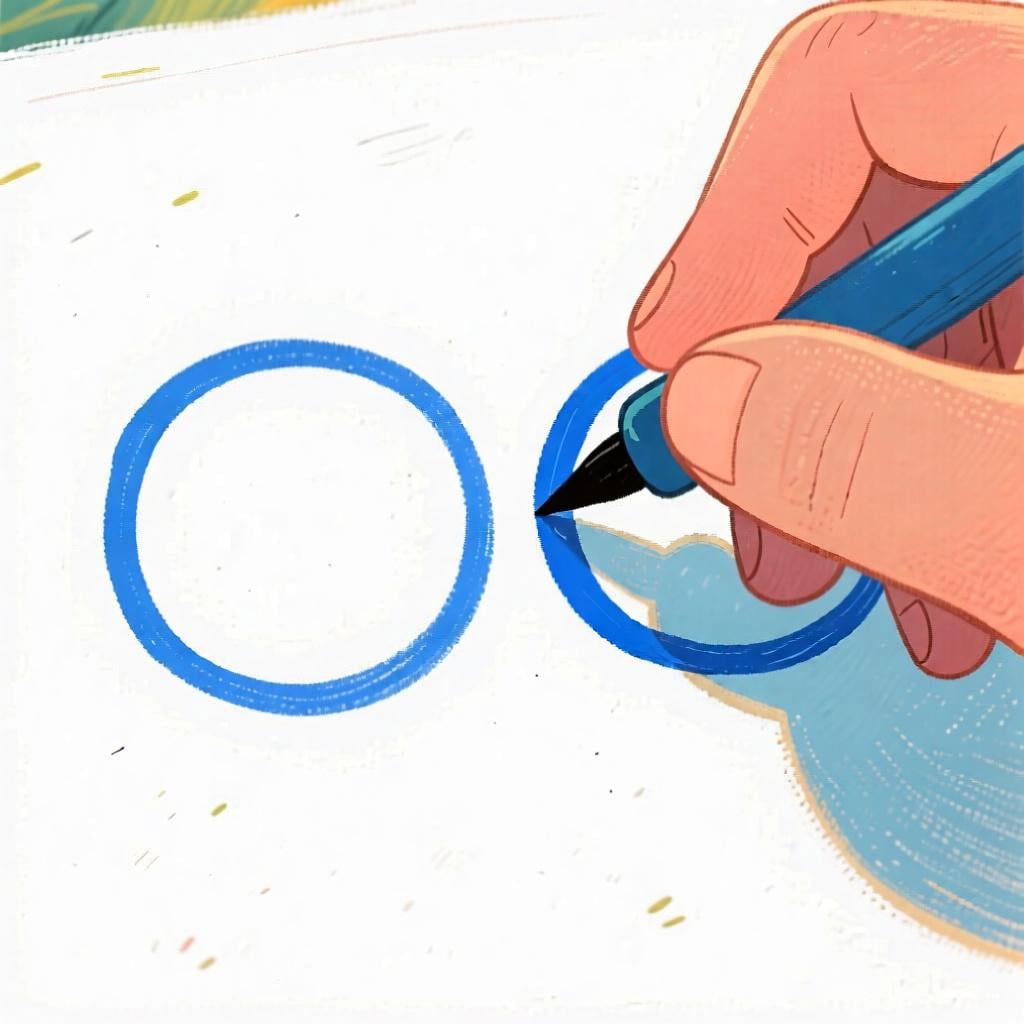volver
/bol-BER/
to return

Visualizing 'volver' as the act of physically returning home after being away.
volver(Verb)
to return
?e.g., to a place
,to come back
?e.g., returning to where the speaker is
,to go back
?e.g., returning to where the speaker is not
📝 In Action
Vuelvo a casa a las seis.
A1I come back home at six.
Mis padres volvieron de su viaje ayer.
A2My parents returned from their trip yesterday.
¿A qué hora vuelves?
A1What time are you coming back?
💡 Grammar Points
The 'Boot' Verb Shape Change
In the present tense, the 'o' in 'volver' changes to 'ue' for most forms (yo, tú, él, ellos). Think of it like a boot shape on the conjugation chart. 'Nosotros' and 'vosotros' are 'outside the boot' and keep the original 'o'.
Irregular Past Form: 'vuelto'
When you use 'volver' with helper verbs like 'haber' (to have), it has a special short form: 'vuelto'. For example, 'He vuelto' means 'I have returned'.
❌ Common Pitfalls
Returning People vs. Returning Things
Mistake: "Voy a volver el libro a la biblioteca."
Correction: Voy a devolver el libro a la biblioteca. Use 'volver' when a person returns somewhere. Use 'devolver' when you return an object to its place.
⭐ Usage Tips
'Volver' vs. 'Regresar'
Both mean 'to return' and are often interchangeable. 'Volver' is generally more common in everyday conversation.

Illustrating 'volver a' meaning to perform an action again, shown by the immediate repetition of drawing a shape.
volver(Verb (Phrasal))
to do (something) again
?Used in the structure 'volver a + verb'
📝 In Action
He vuelto a leer mi libro favorito.
A2I have read my favorite book again.
Si no entiendes, vuelve a preguntar.
B1If you don't understand, ask again.
¡No vuelvas a decir eso!
B1Don't say that again!
💡 Grammar Points
The 'Again' Formula
To say you're doing something again, Spanish has a special formula: [form of volver] + 'a' + [action verb]. It sounds very natural. For example, 'I see it again' becomes 'Vuelvo a verlo'.
❌ Common Pitfalls
Forgetting the 'a'
Mistake: "Necesito volver leer las instrucciones."
Correction: Necesito volver a leer las instrucciones. You always need the small word 'a' to connect 'volver' with the action you're repeating.
⭐ Usage Tips
Sound More Natural
Using 'volver a...' often sounds more fluid and common in conversation than adding 'otra vez' (again) or 'de nuevo' (anew) to the end of a sentence.

Depicting 'volverse' as a transformation, showing liquid water turning into solid ice.
volver(Verb)
to become
?e.g., a change in state or personality
,to turn into
?e.g., a transformation
to make / to drive
?e.g., volver loco a alguien (to drive someone crazy)
📝 In Action
Se volvió una persona muy optimista.
B2He became a very optimistic person.
Ese ruido me está volviendo loco.
B1That noise is driving me crazy.
El agua se volvió hielo con el frío.
B2The water turned into ice with the cold.
💡 Grammar Points
Using 'volverse' for Changes
When 'volver' is used with 'se' (volverse), it describes a deep, often permanent, and sometimes involuntary change in someone's personality or a thing's state.
❌ Common Pitfalls
'Volverse' vs. 'Ponerse'
Mistake: "Se volvió triste cuando escuchó la noticia."
Correction: Se puso triste cuando escuchó la noticia. Use 'ponerse' for temporary, quick emotional or physical changes (like becoming sad or red). Use 'volverse' for more lasting transformations (like becoming cynical).
🔄 Conjugations
indicative
present
imperfect
preterite
subjunctive
present
imperfect
✏️ Quick Practice
💡 Quick Quiz: volver
Question 1 of 2
Which sentence correctly means 'I read the book again'?
📚 More Resources
Frequently Asked Questions
What is the difference between 'volver', 'regresar', and 'devolver'?
Think of it this way: 'Volver' and 'regresar' are for people or things returning to a place, and they're very similar ('volver' is just a bit more common). 'Devolver' is specifically for returning an object to someone or some place, like returning a book to the library or giving back money you borrowed.
Why is the past participle 'vuelto' and not 'volvido'?
It's one of Spanish's common irregular past participles! Just like English has 'break, broke, broken' instead of 'breaked', Spanish has some verbs with special forms. Other common ones are 'abrir' -> 'abierto' (opened) and 'escribir' -> 'escrito' (written). You just have to memorize them, and 'vuelto' is a very important one.